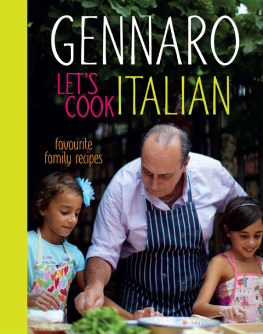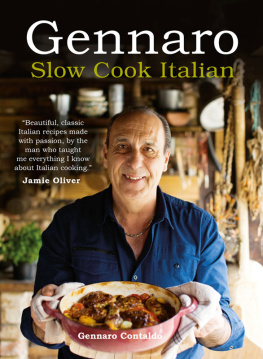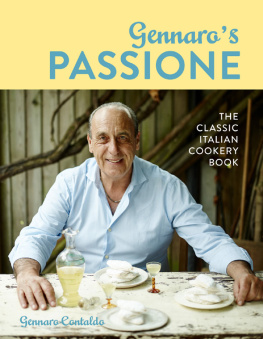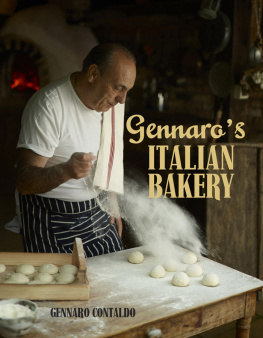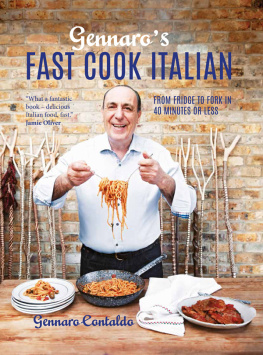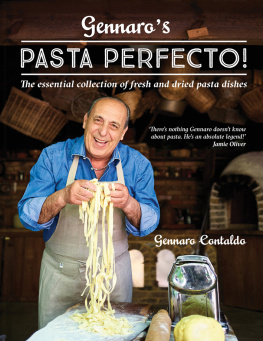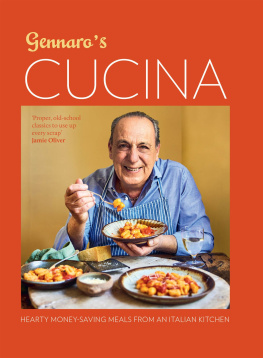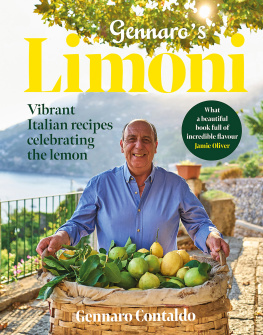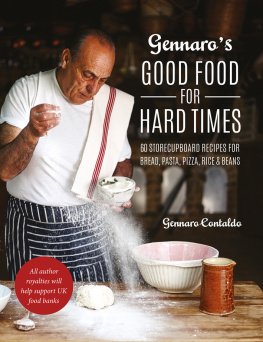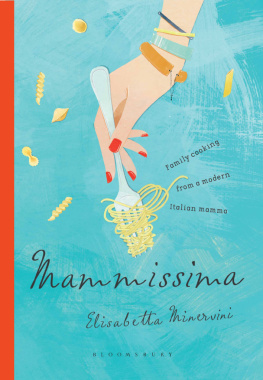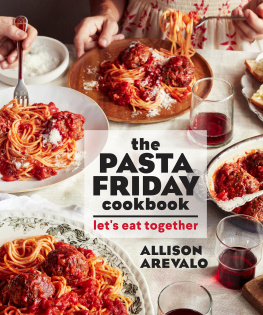




CONTENTS




THE FAMILY THAT COOKS TOGETHER STAYS TOGETHER
F ood brings people together. When I was growing up it was the favourite topic of conversation at the dinner table. This was the same table on which my mother would roll out fresh pasta, knead bread dough or bottle preserves. This table was our altar, a place where all members of our family sat to eat, discuss, argue, laugh, sometimes cry we had the best of times around it. All my family cooked, including my father, who still liked to make his own meals when he was well into his 90s. My aunts, cousins, neighbours, friends, in fact everyone I knew, cooked the meals werent elaborate affairs, but this was good, honest family cooking.
When I first came to England in 1969 I found it odd that food was not a priority in peoples lives they mostly liked to grab a quick bite on the go or eat from a plate balanced on their laps. And, horror of horrors, pasta was out of a can! Of course, things have changed dramatically since then the immigrants to this country have brought their national dishes and foods and we have been exposed to numerous cooking programmes on television, cookery books and magazines, enticing us to cook and experiment. More recently, with fears of GM foods and intensive farming, we have turned to organic, natural and seasonal produce. When I was young, we ate mainly locally grown food. Nowadays we can find all sorts of exotic things to eat, flown in from around the globe, but I still prefer to eat seasonally. I look forward to the first broad beans and peaches in summer, and some of my favourite produce in autumn pears, walnuts and chestnuts.
As a parent, I strongly believe in implementing good eating habits from an early age, and showing my kids where our food comes from and how to cook it. I was taught to respect food; the chickens and rabbits we kept were treated humanely. We never wasted food and leftovers were always used. Now my girls really enjoy making bread, pizza, pasta or gnocchi with me, and baking cakes with their mum. They are fascinated to see what I bring home when Ive been out hunting; they are not afraid to touch the game birds and arent squeamish about watching me clean them. When I was old enough, my father would take me hunting we only killed for food, never for fun and he taught me a lot. My mother introduced me to wild herbs and mushrooms; I would go with her to the hills above our village of Minori and she would teach me to identify the different species. Food was all around us and dominated our lives. Cosa mangiamo per pranzo? (What shall we eat for lunch?) was a constant refrain.
Family life in Italy is changing. More women work outside the home, so they no longer have time to prepare fresh pasta and the other traditional dishes their mothers and grandmothers used to make. However, Italians still want to eat well, and even if their fresh pasta is shop-bought they will still try to ensure its of good quality. Italians still talk about food a lot and, although their meals might be a little more rushed these days, the family still gets together for the evening meal around a table and certainly always on Sundays.
It is so easy to buy everything ready-made these days that I think we forget we can actually make it ourselves. Take something as basic as bread; not only do my children and I have fun making the dough, watching it rise and enjoying that magical moment when it is baked, but I also know they are eating something good. For me, this is spending quality time with my family and I am passing on some of my family traditions, which I hope will stay with them forever.



W e loved soup as children, especially during the colder months. My older sisters were the experts. They made soup with beans, pulses, vegetables and all sorts of leftovers even stale bread. It was perfect comfort food, warming and gentle yet satisfying and full of goodness. We always kept different types of legumi (pulses) in small sacks borlotti, cannellini, black-eyed, kidney and broad beans, peas and lentils. My sisters would patiently sift through them to discard any impurities and then soak them in cold water overnight before cooking them the next day with vegetables and herbs to make the most delicious, hearty soup. I dedicate this chapter to my elder sisters, Filomena, Genoveffa and Carmelina, for being the best soup-makers ever.
In rural Italy it was common for soup to be made early in the morning and left gently bubbling on the stove until everyone came home in the evening. This ensured an instant warm, home-cooked meal.
Soup is sometimes served instead of pasta or risotto as a primo (starter). For the evening meal, a light soup in the form of a vegetable or meat broth (usually chicken or beef) with small pastina shapes, and a good sprinkling of grated Parmesan is quite common. For a more substantial soup, small ravioli or bread dumplings are added. Pastina in brodo (small pasta shapes in broth) is an Italian favourite, and reminds me of home-cooking in my childhood.
Soups are easy to make, nutritious and economical, and they can be made in large quantities to be frozen and then enjoyed when you have little time to cook, making them nutritious fast food. This is a perfect way to use up seasonal vegetables when you get a glut of, say, courgettes (zucchini), spinach or pumpkin.
I still enjoy soup at home today, and my wife Liz loves to make it from light pastina broths for the girls and delicate vegetable pured soups to substantial bean and pasta soups that are a meal in themselves.
Minestra di verdure
Vegetable soup
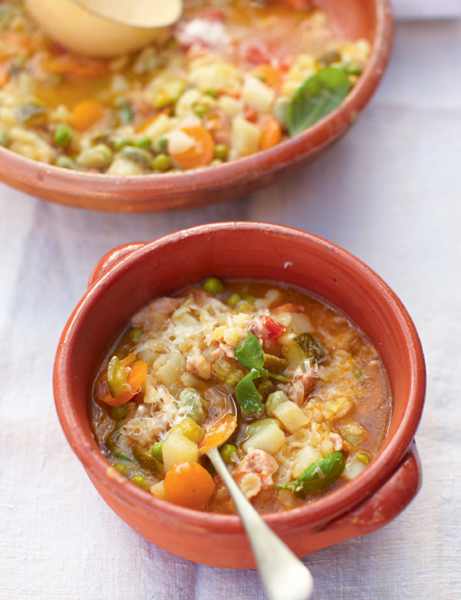

SERVES 46
5 tbsp extra virgin olive oil
1 onion, finely chopped
1 garlic clove, finely chopped
40g/1 oz pancetta or bacon, finely chopped (optional)
Next page
